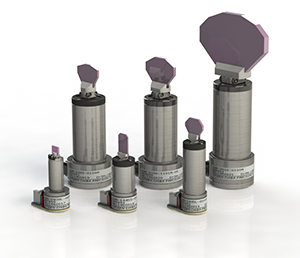Discover the Perks of Using a Galvanometer Scanner in Precision Dimension
Discover the Perks of Using a Galvanometer Scanner in Precision Dimension
Blog Article
Key Applications of a Galvanometer Scanner in Different Scientific Study Area
Galvanometer scanners have ended up being indispensable to numerous clinical research study areas, providing enhanced accuracy in applications ranging from biomedical imaging to environmental surveillance. As we explore the diverse applications of galvanometer scanners, it becomes noticeable that their effect extends far past mere technological capabilities, increasing inquiries concerning their future capacity in arising study locations.
Biomedical Imaging

In confocal microscopy, galvanometer scanners assist in the acquisition of photos with boosted resolution and comparison, enabling scientists to visualize cellular elements in vivo. The ability to rapidly catch several focal planes improves the three-dimensional restoration of cells, giving crucial insights right into their architecture and function.

Additionally, the fast scanning capacities of galvanometer systems add to innovations in vibrant imaging applications, such as checking cellular actions to stimulations. Therefore, galvanometer scanners are important tools in the area of biomedical imaging, progressing research and scientific diagnostics with their accuracy and efficiency.
Material Processing
Precision in material processing is crucial for attaining high-quality cause various industrial applications (galvanometer scanner). Galvanometer scanners play a vital role in boosting this precision by enabling quick and exact activity control throughout the processing of materials such as porcelains, steels, and polymers. These devices assist in techniques like laser cutting, welding, and inscription, which require finely-tuned adjustments to make sure optimum outcomes
In laser cutting, as an example, galvanometer scanners permit complex styles to be performed with high fidelity, reducing waste and enhancing manufacturing performance. The fast activity abilities enable fast adjustments in the laser beam of light path, which is crucial for preserving constant cutting quality across differing product densities. In a similar way, in laser welding applications, the precision provided by galvanometer scanners makes certain strong joints with very little thermal distortion, thereby enhancing structural stability.
Additionally, the flexibility of galvanometer scanners to various laser kinds and wavelengths additionally broadens their energy in product handling. Their capacity to function in tandem with innovative software program for real-time surveillance and control includes an additional layer of sophistication, allowing suppliers to attain specific specifications customized to particular applications. Hence, galvanometer scanners are crucial ahead of time the capabilities of material handling technologies.
Optical Characterization
In the world of optical characterization, the duty of galvanometer scanners becomes significantly considerable as they promote the analysis of different optical residential or commercial properties with high accuracy. These devices allow exact control of laser light beams, permitting researchers to systematically probe materials at numerous angles and frequencies. This ability is important for characterizing the refractive index, absorption coefficient, and scattering residential properties of diverse materials.
Galvanometer scanners are especially effective in strategies such as optical coherence tomography (OCT) and laser-induced fluorescence (LIF), where fast scanning is important. By accomplishing high-speed inflection of the laser placement, galvanometer scanners boost the temporal resolution of these approaches, bring about boosted imaging and analysis. In addition, they make it possible for the expedition of complex interactions in between light and issue, which is crucial for recognizing material habits under various problems.
Furthermore, the combination of galvanometer scanners with spectroscopic methods increases their energy, enabling detailed spectral analysis across a variety of wavelengths. This flexibility makes them essential tools in fields such as products science, biomedical study, and nanotechnology, where thorough optical characterization is vital for progressing expertise and innovation.

Laser Micromachining
The development of laser micromachining has transformed producing procedures, allowing the creation of elaborate structures with unequaled precision. Discover More This method makes use of high-intensity laser light beams to exactly eliminate material from a substrate, making it feasible to make micro-scale elements that are essential in various markets. The application of galvanometer scanners in laser micromachining boosts the performance and precision of this procedure by enabling fast and exact light beam positioning.
Galvanometer scanners assist in the dynamic control of laser light beams, enabling intricate patterns to be etched or reduced with high integrity. Their rapid response times and high-resolution abilities permit for the control of laser pulses, which is vital for attaining the preferred product residential properties and surface coatings. This modern technology is specifically helpful in fields such as electronics, where the miniaturization of components is vital for performance improvement.
Moreover, laser micromachining is progressively being used in the clinical field for producing precision tools and implants. The mix of laser technology and galvanometer scanning not just simplifies production workflows but likewise decreases waste and enhances general material utilization, making it a sustainable option for modern manufacturing difficulties.
Environmental Monitoring
Ecological surveillance has become significantly essential in managing the health and analyzing of ecosystems and city settings. The integration of galvanometer scanners in this field enables specific, rapid, and effective data collection, promoting better decision-making processes. These scanners are skilled more at routing laser beams or sensors throughout numerous terrains, permitting high-resolution mapping of environmental criteria such as air quality, soil composition, and water air pollution.
In air high quality surveillance, galvanometer scanners can be used to analyze particulate issue and aeriform toxins, providing real-time information that notifies public health and wellness efforts. For water quality analyses, these scanners can assist in spotting pollutants and gauging physical specifications, thus ensuring conformity with ecological regulations. Additionally, in remote sensing applications, galvanometer scanners improve the ability of satellite and drone systems to catch comprehensive pictures and information of substantial areas, identifying eco-friendly changes and anthropogenic influences.
The flexibility and precision of galvanometer scanners make them important tools in environmental tracking, adding substantially to lasting growth efforts and the protection of natural resources. As the demand for efficient ecological management expands, the function of these sophisticated devices will undoubtedly expand even more.
Final Thought
In summary, galvanometer scanners offer as essential tools throughout numerous clinical research study domain names. The flexibility and performance of galvanometer scanners proceed to drive advancements in these vital areas.
In laser welding applications, the accuracy supplied by galvanometer scanners makes certain solid joints with minimal thermal distortion, thus boosting structural honesty.
In addition, read what he said the adaptability of galvanometer scanners to different laser kinds and wavelengths further widens their energy in product handling. By achieving high-speed modulation of the laser position, galvanometer scanners enhance the temporal resolution of these methods, leading to improved imaging and analysis. The application of galvanometer scanners in laser micromachining boosts the effectiveness and precision of this process by enabling exact and fast beam of light positioning.
Galvanometer scanners help with the vibrant control of laser beams, allowing complex patterns to be etched or cut with high fidelity.
Report this page